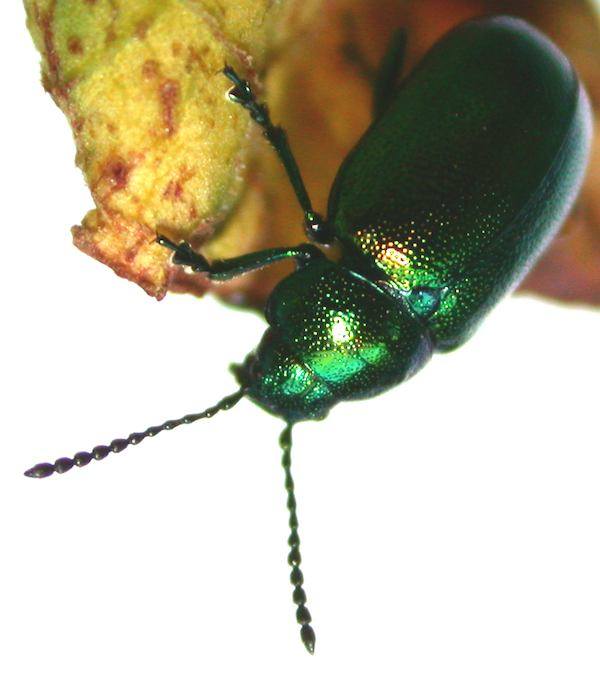Slippery Feet Remind Beetles to Take a Footbath

Insects depend on their adhesive footpads to help them skitter along leaves, logs and the sides of your picnic basket. Now, a study reveals just how beetles keep their feet clean and ready to cling.
The research, reported today (Nov. 9) in the journal Proceedings of the Royal Society B, finds that it's a decrease in friction that tells beetles to groom their dirty feet. Though the study was undertaken in the spirit of curiosity, said lead researcher Stanislav Gorb of Christian Albrecht University of Kiel in Germany, the findings could have implications for robot designers or engineers looking for novel ways to measure contamination.
Hairy feet
Beetle feet are covered with miniscule hairs called setae. These setae produce fluid that isn't sticky but helps increase the molecular attraction between the beetle's foot and a surface, much in the same way that a wet scrap of paper will stick to glass. Many plants make it their business to disrupt insect setae by excreting tiny wax crystals that dirty the bugs' feet. For example, Gorb told LiveScience, carnivorous pitcher plants secrete wax so insects walking along inside them will slip, fall and get trapped for digestion.
Beetles have special comb-like organs on their legs that they use to clean their feet when they get contaminated. The question, Gorb said, was how the bugs know their feet are dirty. Animals have all sorts of sensors, like the touch receptors in human fingers that gather information about tactile sensations, or the receptors in skin that respond to pressure. What the beetles have in their feet was a mystery.
So Gorb and his colleagues wrangled six leaf beetles onto aluminum-and-silicon surfaces nano-engineered to have different levels of roughness. First, they anesthetized the beetles with carbon dioxide. Next, they used a heating tool to place a drop of molten beeswax onto each beetle's back, affixing a human hair to each exoskeleton. When the beetles woke up, the researchers attached the hair to a device used to measure force.
Then they let the beetles walk on the engineered surfaces.
Sign up for the Live Science daily newsletter now
Get the world’s most fascinating discoveries delivered straight to your inbox.
"We use beetles because they are pretty stupid," Gorb said. "Or just pretty persistent. They just walk, and they always walk in one direction."
More friction, please
As the beetles walked, the researchers observed how often they tried to groom their feet. As it turned out, those on surfaces that generated fewer friction forces groomed more often. That suggests the beetles have mechanoreceptors, probably in their joints, which translate frictional forces into signals that trigger grooming behavior, Gorb said.
Despite the fact that the relatively slippery, low-friction surfaces only made the beetles' feet feel dirty — in actuality, their feet stayed clean during the experiment — the insects never stopped grooming. Their persistence indicates there's no signal other than friction getting to the beetle's nervous system to tell them that their feet are actually clean, Gorb said. Imagine you had a bit of glue on your finger, Gorb said. You'd be able to feel the stickiness on your skin even without touching another surface. Beetles lack that talent, he said.
"They cannot get information directly about contamination," he said. "They get it only if they come into contact and apply force to the foot."
Gorb and his colleagues hope to investigate further to find out if other insects or sticky-footed spiders have similar foot-cleaning adaptations. Another question for neurobiologists, Gorb said, is where the friction sensors reside in the beetle body.
"To my knowledge, there is no study showing if and how the insects are able to measure friction," Gorb said. "We know from this study they do, but we don't know how."

Stephanie Pappas is a contributing writer for Live Science, covering topics ranging from geoscience to archaeology to the human brain and behavior. She was previously a senior writer for Live Science but is now a freelancer based in Denver, Colorado, and regularly contributes to Scientific American and The Monitor, the monthly magazine of the American Psychological Association. Stephanie received a bachelor's degree in psychology from the University of South Carolina and a graduate certificate in science communication from the University of California, Santa Cruz.









